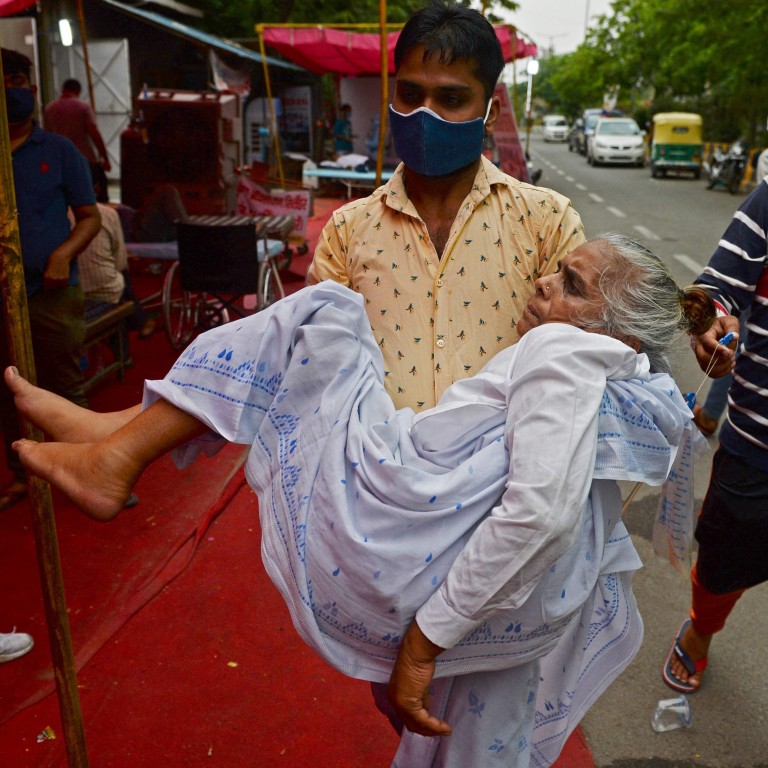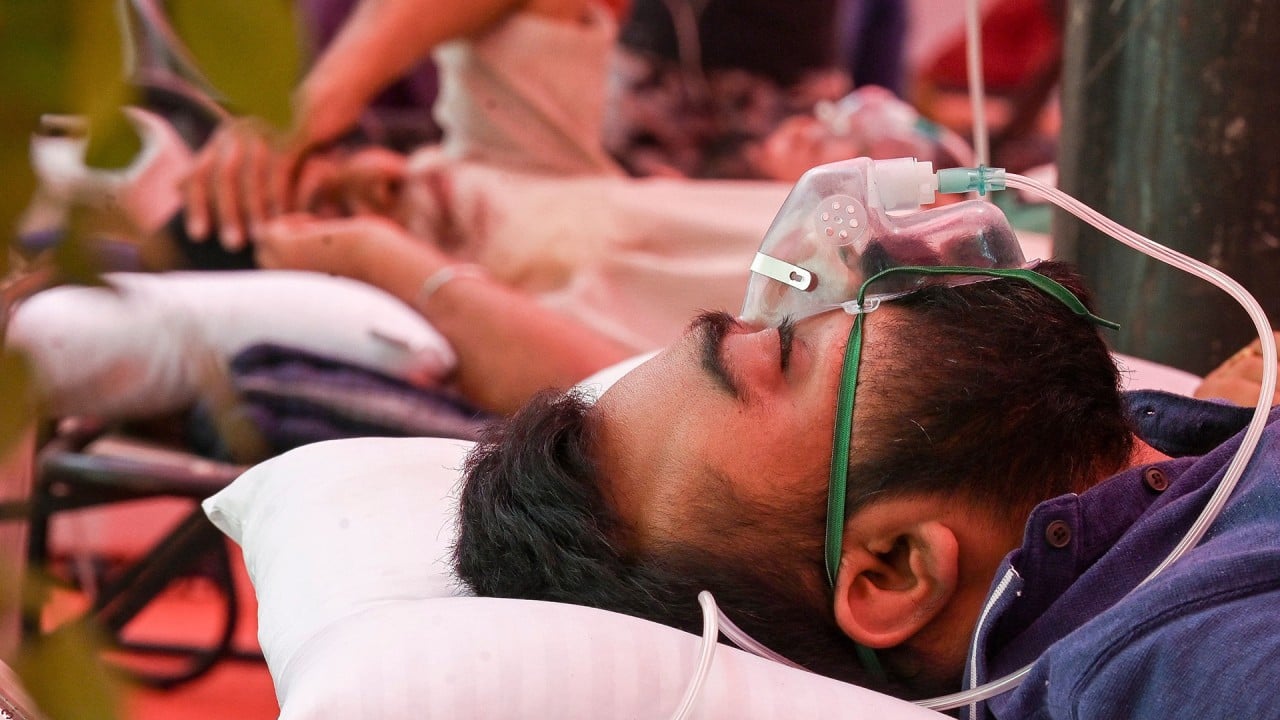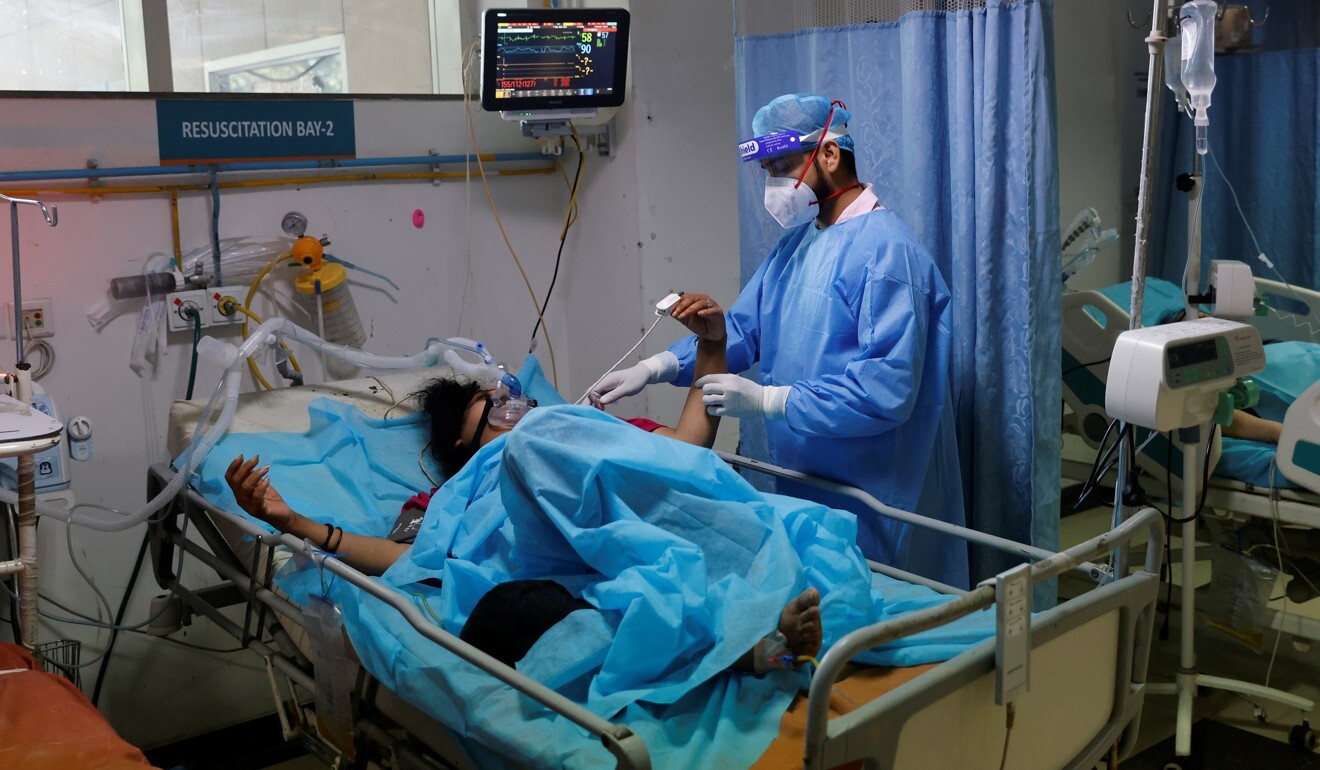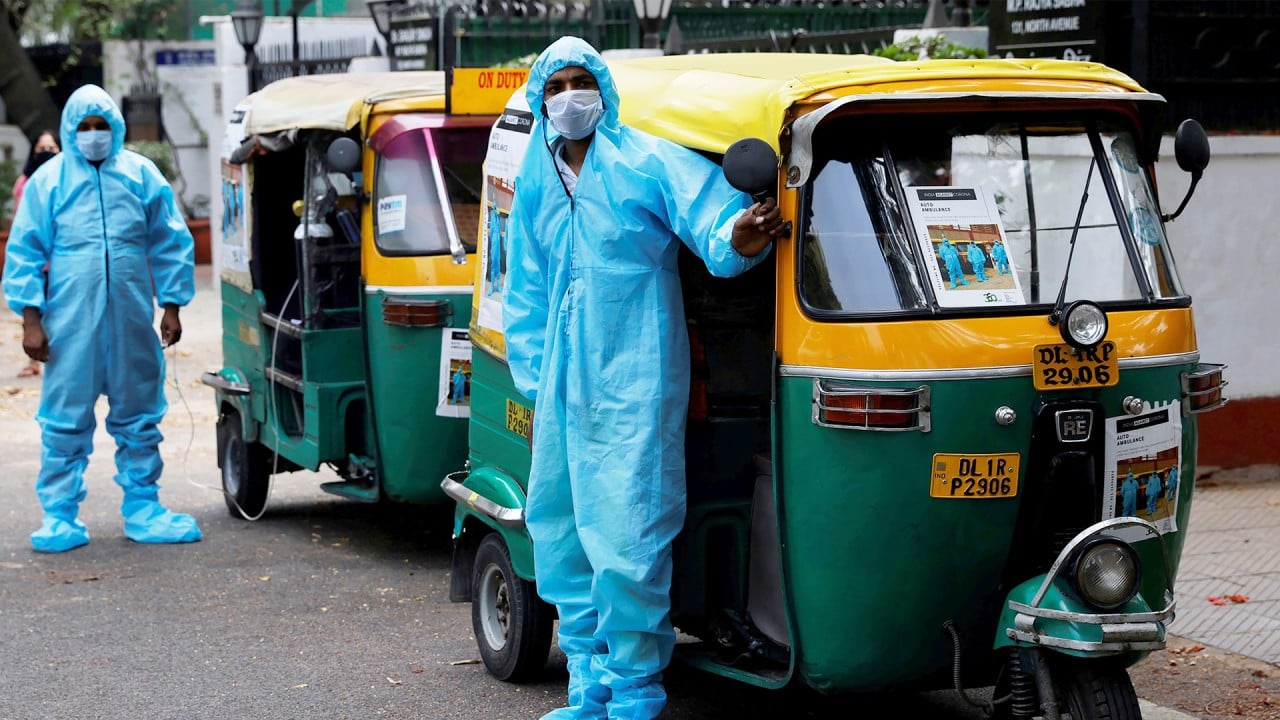
The missteps that led India into an oxygen shortage amid a devastating Covid-19 surge
- Supply has been boosted and donations are coming in, but patients still suffocate to death in hospitals and relatives are seeking supplies on the black market
- Poor planning and logistical problems have played a part, as have superspreader events, religious beliefs about cow dung, and a flesh-eating black fungus
In the past three weeks, more than 68 trains carrying 4,200 tonnes of liquid medical oxygen have travelled from Indian states that produce it, such as Gujarat, Andhra Pradesh, Odisha, Jharkhand and West Bengal, to cities that are in dire need of it, like New Delhi, Lucknow and Bangalore.
Oxygen manufacturers say they have boosted supplies tenfold, while New Delhi has diverted all industrially produced oxygen, which accounts for 90 per cent of the country’s total production, to the health care sector.
Meanwhile, Indian military aircraft and vessels have brought in cryogenic tanks for transporting oxygen, oxygen concentrators to help people breathe, electrical generators and drugs from countries like Singapore, Australia and France. The United States and Britain have shipped ventilators, oxygen concentrators, masks and drugs.
Yet seven weeks since India began experiencing exponential growth in virus infections and deaths, stories of patients suffocating to death in hospitals with no oxygen supplies and a black market in oxygen canisters fuelled by helpless citizens continue to dominate headlines.

05:35
‘Fear has activated’: How Covid-19 is affecting young people in India
India’s seeming failure to control the spread of Covid-19 in what is now the world’s epicentre of the pandemic has led critics to ask why a nuclear power and rising industrial powerhouse did not take stronger steps earlier to prevent this catastrophe.
Vikas Bajpai, assistant professor at the Centre of Social Medicine and Community Health, Jawaharlal Nehru University, said the reality was that “things are not changing on the ground”, even as the government maintained it was doing enough, with ministers taking critics to task for complaining about inadequacies.
“There is everything except governance,” said Bajpai.
“How could a country battle a pandemic depending upon the charity of a few good people and without any clear strategy, willingness and determination of the government to take effective measures?” he asked.
In an affidavit to the Supreme Court on Tuesday, Modi’s government cautioned that “any overzealous, though well-meaning judicial intervention” could have consequences, including hampering the abilities of experts to “find innovative solutions on the go”.

India didn’t have the luxury of preparing detailed coronavirus vaccination plans, unlike previous vaccination programmes for which it had been lauded, the government told the court.
“In view of the unprecedented and peculiar circumstances under which the vaccination drive is devised as an executive policy, the wisdom of the executive should be trusted,” it said.
WHERE IT WENT WRON G
Just over half of India’s 23 million Covid-19 cases and about a third of its 250,048 deaths so far were discovered during the second wave of infections that began two months ago in March. According to media reports, at least 178 Covid-19 patients have died due to oxygen shortages across India.
K.E. Raghunathan, convenor of Consortium of Indian Associations, a group of regional small and medium scale industry associations, said demand for medical oxygen had been “grossly underestimated” for the second wave in India and the mechanism to supply oxygen to hospitals from the manufacturing plants had been “badly planned”.
Chinese firms see surge in demand from India for medical oxygen devices
More than 54.5 per cent of Covid-19 patients admitted to hospital required oxygen support now, a higher percentage than in the first wave that peaked between September and November last year.
Eleven people died late on Monday in a government hospital in Tirupati, a city in the southern state of Andhra Pradesh, due to a delay in the arrival of a tanker carrying oxygen, a government official said. On May 1, 12 Covid-19 patients including a doctor at a Delhi hospital died after it ran out of oxygen.
But Siddharth Jain, the executive director of Inox Air Products, which describes itself as the largest manufacturer of medical oxygen, said India had managed to ramp up oxygen production from 7,200 metric tonnes to about 9,200 metric tonnes in April.

01:51
Auto-rickshaws used as ambulances in India as coronavirus surge strains health system
Jain said one reason for the delay in sending oxygen to the capital was that producing states needed to meet their own demands first, adding that “no one had expected” the second wave to hit with such ferocity.
So while India had the infrastructure to produce and distribute oxygen for this wave, it would take time to “mobilise it in the right direction”.
Raghunathan agreed the surge in cases had overwhelmed private sector producers.
Munjal Mehta, director of Shell-n-Tube, a leading cryogenic equipment manufacturer, said that in normal times, if a manufacturer of liquid medical oxygen provided oxygen to five hospitals, they would require one truck with a tank to transport oxygen once a week.
Deadly ‘black fungus’ adds to India’s Covid-19 woes
But now the manufacturer needed to ferry oxygen to all five hospitals every day and there weren’t enough trucks, said Mehta, adding that it took six to eight weeks to make an oxygen transport tanker.
While current demand for cryogenic tankers had risen five-fold, producers could not invest to produce five times as many tankers and assume they would be used even after the pandemic subsided, Mehta said.
It is also unclear if plans to establish 100 oxygen plants announced in April by the government will materialise.

Sanjay Jaiswal of Airox Technologies, one of the companies which bagged tenders for 42 plants last year, said he had delivered 35 plants but that the sites for the seven others were not yet ready.
Raghunathan said the biggest question for private industry players considering increasing production capacity or setting up new facilities was “who will sustain the cost in the long-run once the crisis is over?”
“The public sector must play a role for manufacturing oxygen for health care,” he said.
OTHER MISSTEPS
Cases had already been rising in February as Modi and the home minister, Amit Shah, held massive political rallies ahead of state polls. Both were spotted without masks at most rallies.
The religious festival Kumbh Mela, held in March and April, saw 3.5 million people descend from across India, many not wearing masks.
Harsh Mahajan, the president of the Healthcare Federation of India, a body that represents some of the country’s prominent private hospitals, described these as “superspreader events” and said they generated a false sense of complacency among the public that it was OK to let their guard down.
The Indian government also ignored a 190 page parliamentary committee report, which warned of a second wave in November and pointed its attention to a “lack of hospital beds”, and “inadequate ventilators”, Bajpai the university professor said.

01:42
Temple in India converted into care centre as coronavirus cases skyrocket
And when international aid landed in Indian airports last month, the shipments remained stuck in bureaucratic red tape for more than a week before some of it began to reach hospitals last Thursday, according to media reports.
Critics have also questioned the Modi government’s failure to declare a nationwide state of emergency, impose a lockdown or bring in the army to help run medical care facilities.
T Sundararaman, former director of the National Health Systems Resource Centre, an advisory body of the Indian health ministry, believed the government was still “struggling” to deal with the caseload and “had no idea” about how the crisis would unfold.
Complicating the situation, Indian doctors have been told to look out for signs of mucormycosis or “black fungus” – a rare but potentially fatal flesh-eating infection – in Covid-19 cases, while some religious believers in the state of Gujarat have been going to cow shelters to cover their bodies in cow dung and urine in the belief that doing so builds immunity, despite a lack of scientific evidence.
India’s vaccination campaign has also encountered problems. Only about 1.97 per cent of India’s 1.3 billion population has been fully vaccinated, while the campaign has also been hit by supply shortages.
A Reuters report predicted that at the current pace, it would take 2.8 years to cover 75 per cent of India’s population with a two-dose vaccine.
For now, Bajpai urged the government to crack down on the hoarding or black market sales of oxygen and drugs used to treat Covid-19 such as remdesivir, and make sure these items were available at original cost.
Government figures have also been criticised for suggesting unscientific methods to fight the virus. One minister tweeted recently that traditional Ayurveda offered a “ray of hope” to Covid-19 patients.
In a recent statement, Jan Swasthya Abhiyan, a people’s movement working for health rights, asked Modi to streamline uninterrupted supply and distribution of oxygen to hospitals, expand manufacture of vaccines and augment the existing capacity for critical care in government hospitals.
Additional reporting by Bloomberg and Reuters
